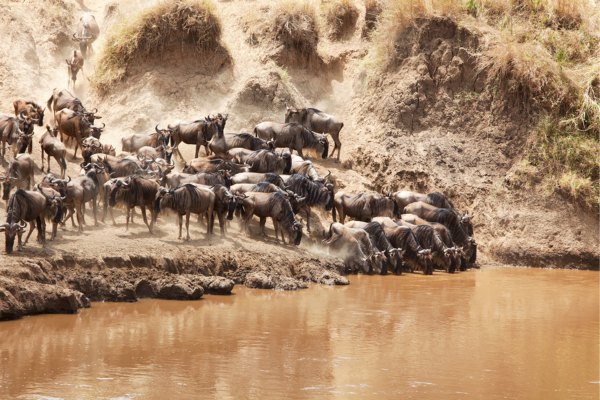Masai Mara, a wildlife haven in Kenya, offers a mesmerizing experience for nature enthusiasts and adventure seekers alike. Choosing the perfect time to explore this iconic destination is crucial to make the most out of your safari. Let’s dive into the various factors that contribute to determining the best time to visit Masai Mara.
Introduction
Nestled in southwestern Kenya, Masai Mara is renowned for its breathtaking landscapes and diverse wildlife. The park is a treasure trove of natural wonders, and your choice of when to visit can significantly impact the quality of your experience.
Climate and Seasons in Masai Mara
Understanding the climate and the distinct seasons in Masai Mara is fundamental to planning an optimal visit. The region experiences a classic savannah climate, characterized by wet and dry seasons.
The long rains typically occur from March to May, while the short rains grace the land from October to December. The dry seasons, from June to September and January to February, are marked by clear skies and abundant wildlife.
Peak Tourist Seasons
For many, the allure of Masai Mara is irresistible during the peak tourist seasons. These periods, from July to October and December to January, coincide with the migration of wildebeest and zebra. The park buzzes with activity, offering unparalleled opportunities to witness the Great Migration and abundant wildlife.
While the spectacle is awe-inspiring, the influx of tourists during these times also means higher prices, crowded game drives, and a more competitive booking environment.
Low Tourist Seasons
Contrary to popular belief, visiting Masai Mara during the low tourist seasons has its own set of advantages. The months of March to June and November often provide a quieter and more intimate safari experience. During these times, accommodations may offer discounts, and the park is less crowded, allowing for a more serene exploration of its wonders.
Migration Season
One of the highlights of visiting Masai Mara is undoubtedly the Great Migration. This annual event sees millions of wildebeest and zebras crossing the Mara River in search of greener pastures. To witness this awe-inspiring spectacle, plan your visit between July and October when the migration is at its peak.
Wildlife Sightings
Understanding the best times for specific wildlife sightings enhances the safari experience. Different seasons offer unique opportunities to spot predators, migratory birds, and elusive animals. Early mornings and late afternoons are generally the best times for game drives.
Photography Opportunities
Photography enthusiasts should consider visiting during the dry seasons when the landscape is vibrant, and the wildlife is more active. The soft morning and evening light during these times provides the perfect conditions for capturing stunning images.
Cultural Experiences
To enrich your Masai Mara experience, consider aligning your visit with local events and festivals. Interacting with the Maasai people, known for their vibrant culture, adds a unique dimension to your safari.
Balancing Weather Conditions
The best time to visit Masai Mara depends on personal preferences regarding weather conditions. While the dry seasons offer clear skies and pleasant temperatures, the wet seasons bring a lush landscape and the opportunity to witness newborn animals.
Budget-Friendly Options
For budget-conscious travelers, exploring Masai Mara during the low tourist seasons can be a smart choice. Accommodation prices may be more reasonable, and safari packages may offer discounts, allowing you to experience the wonders of the park without breaking the bank.
Conservation Efforts
Responsible tourism is vital for preserving the delicate ecosystem of Masai Mara. Visitors should be aware of the impact of their presence and support conservation efforts. Choosing tour operators committed to sustainability ensures a positive contribution to the region.
Safety Considerations
Considering safety is paramount when planning a trip to Masai Mara. Being mindful of the weather conditions, respecting wildlife, and following the guidance of experienced guides contribute to a safe and enjoyable safari experience.
Popular Attractions
Masai Mara boasts a myriad of attractions, from the iconic Big Five to the stunning landscapes of the Mara Triangle. Tailoring your visit based on personal interests ensures a fulfilling safari adventure.
Local Cuisine and Festivities
Exploring the local cuisine adds a delightful flavor to your Masai Mara experience. Be sure to savor traditional dishes and immerse yourself in local festivities for a well-rounded cultural encounter.
Conclusion
In conclusion, the best time to visit Masai Mara depends on your preferences and priorities. Whether you seek the excitement of the Great Migration, a more intimate safari experience, or budget-friendly options, careful consideration of the various factors will ensure a memorable adventure in this African paradise.
FAQs
- Q: Is Masai Mara safe for tourists?
- A: Yes, Masai Mara is generally safe for tourists. However, it’s essential to follow safety guidelines and travel with reputable tour operators.
- Q: What is the significance of the Great Migration?
- A: The Great Migration is a natural phenomenon where millions of wildebeest and zebras migrate in search of food and water, creating a spectacular wildlife event.
- Q: Are there budget-friendly accommodations in Masai Mara?
- A: Yes, especially during the low tourist seasons, you can find budget-friendly accommodations and safari packages.
- Q: What should I pack for a trip to Masai Mara?
- A: Pack lightweight clothing, a hat, sunscreen, sturdy shoes, a camera, and binoculars for an optimal safari experience.
- Q: How can I contribute to conservation efforts in Masai Mara?
- A: Choose eco-friendly tour operators, follow ethical wildlife viewing practices, and support local conservation initiatives.

